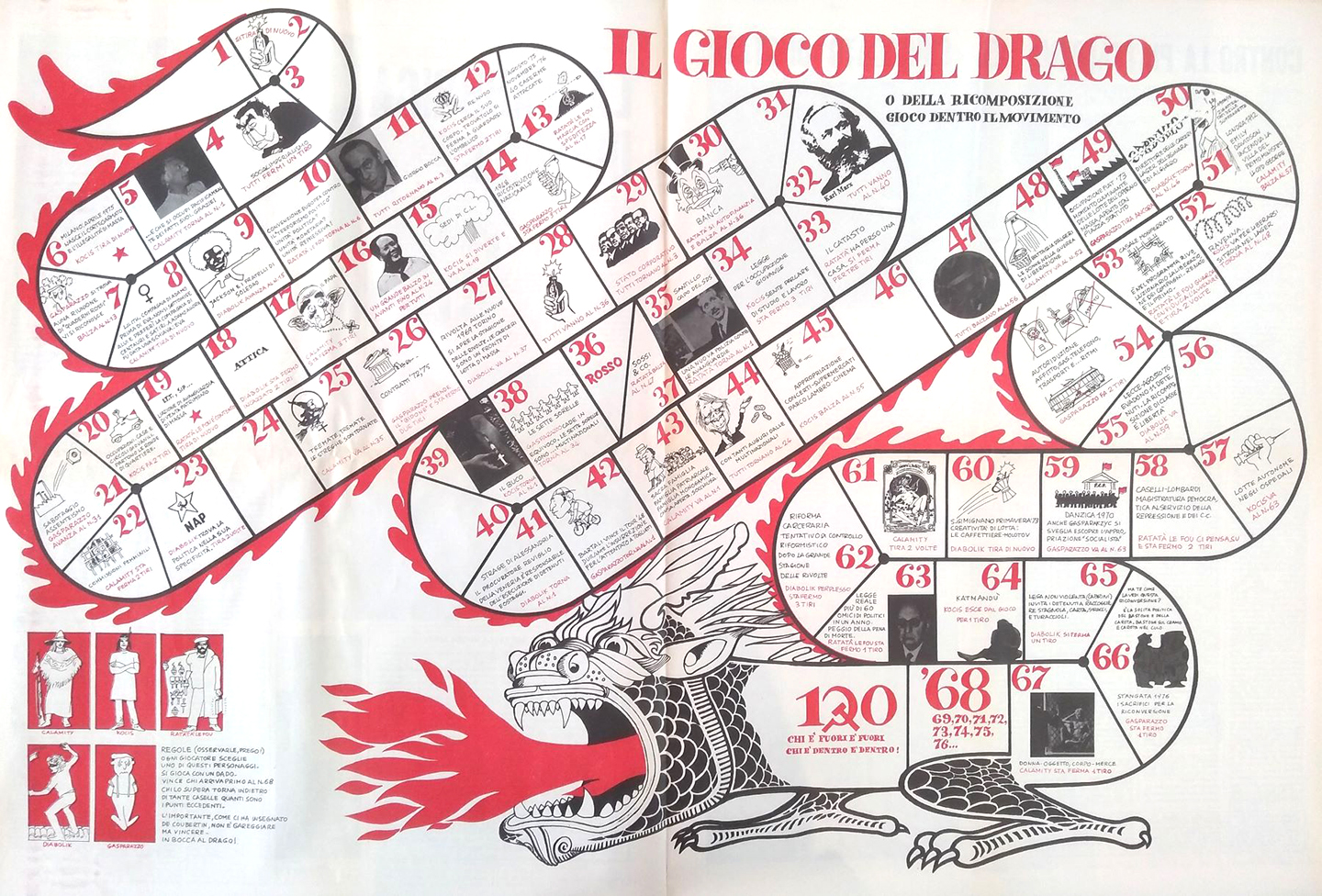This is an edited excerpt from Gigi Roggero, Italian Operaismo: Genealogy, History, Method, trans. Clara Pope (MIT Press, 2023).
On the operaist concept of co-research, see Devi Sacchetto, Emiliana Armano, and Steve Wright, “Coresearch and Counter-Research: Romano Alquati’s Itinerary Within and Beyond Italian Radical Political Thought,” Viewpoint, September 27, 2013 →.—Ed.
In order to distinguish Italian operaismo from other workerisms, the Italian word “operaismo” will be used throughout the text, with the anglicization “operaist” as its adjective. Those involved in operaismo will be referred to using the Italian word “operaisti.” The word “operaietà” will remain in Italian, and describes the subjectivity of the figure around which the working class is politically recomposed.—Trans.
For further information on the German experience we recommend the book La rivoluzione tedesca 1918–1919, with a preface by Sergio Bologna, and Bologna’s essay “Composizione di classe e teoria del partito alle origini del movimento consiliare” (Class composition and the theory of the party at the origins of the councilist movement) published in Operai e stato, which came out in 1972 as part of the series “Materiali Marxisti” published by Feltrinelli and edited by comrades at the Institute of Political Sciences in Padua.
Published in C. L. R. James, You Don’t Play with Revolution: The Montréal Lectures of CLR James, ed. David Austin (AK Press, 2009).
On this we recommend Toni Negri’s article “Lenin e i soviet nella rivoluzione” (Lenin and the soviets in the revolution), published in 1965 in the first edition of Classe operaia and translated as “The Factory of Strategy” in his book Factory of Strategy: Thirty-Three Lessons on Lenin (Columbia University Press, 2014). In this book we also find the formula “organization is spontaneity reflecting upon itself,” which closely echoes Romano Alquati’s definition of “organized spontaneity,” which he used to interpret the struggles in Turin at the beginning of the 1960s, and to which we will return later.
On this subject we recommend Rita di Leo’s L’esperimento profano (Ediesse, 2012).
The Federazione Italiana Operai Metallurgici (FIOM) is the metalwork sector of the Confederazione Generale Italiana del Lavoro (CGIL), the trade union linked to the Communist Party.
The 1973 historic compromise was a political alliance between the Communist Party and the Christian Democracy (DC) party, proposed by the secretary of the Communist Party, Enrico Berlinguer.—Ed.
Olivietti is a historic business based in Ivrea in the province of Turin, which started off by manufacturing typewriters. After the Second World War, businessman and intellectual Adriano Olivetti, bringing together elements of Fabianism and humanitarian and Christian socialism, developed the idea of a utopian community that would be both productive and harmonious, able to guarantee the development of society and the individual. His Movimento Comunità (Community Movement) stood for election and, more importantly, attracted many intellectuals, trade unionists, and experts who wanted to set up an innovative industry, based on the concept of a capitalism founded on technical progress and interclass harmony. While the Left, past and present, is lavish in its praise of the Olivettian “community,” Alquati saw it as a mystification, revealing the antagonistic reality and organized conflict within it. This partly explains both his problems with the Left and why he is remembered as a lonely and isolated figure.
We begin the word “History” with a capital letter when it is understood as a necessary teleological progression, which for the apologists of the current system ended with the triumph of capital, and for Marxists will evolve into socialism and, ultimately, communism.
For more in-depth discussions on this topic, see Gigi Roggero, Guido Borio, and Francesca Pozzi, Futuro anteriore (DeriveApprodi, 2002).
See the interview with Alquati in Futuro anteriore. This, like the other interviews mentioned below, are all on the CD-ROM that comes with the book; some parts of the interviews were then published in Gli operaisti, edited by Gigi Roggero, Guido Borio, and Francesca Pozzi (DeriveApprodi, 2005).
